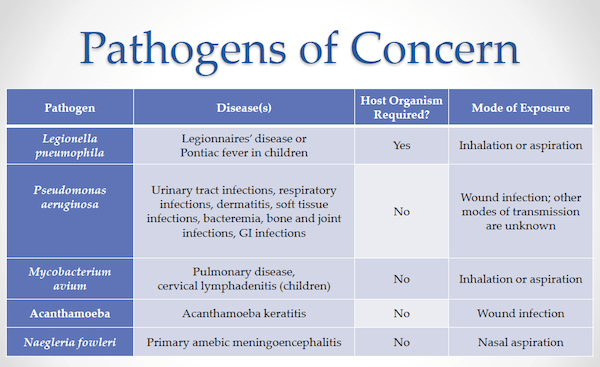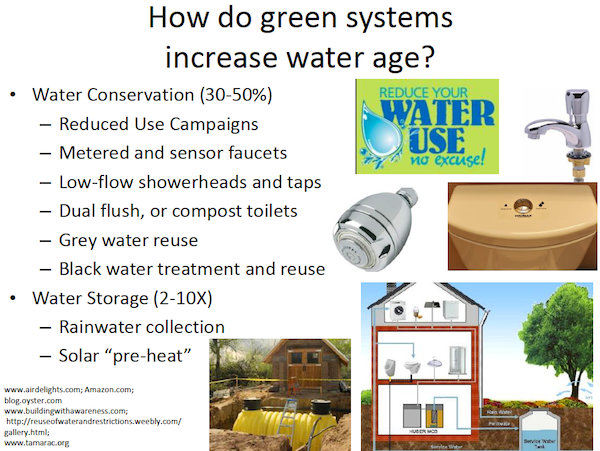 In late April, leaders from the plumbing industry gathered in Washington, D.C. for the Plumbing Industry Leaders Coalition (PILC). Every year the group gets together to chart progressive action for the industry: Legionella standards, skilled worker shortage, dry drains research, U.S. water strategy, etc. The plumbing industry think tank gathers every year to seek collaboration on industry initiatives.
In late April, leaders from the plumbing industry gathered in Washington, D.C. for the Plumbing Industry Leaders Coalition (PILC). Every year the group gets together to chart progressive action for the industry: Legionella standards, skilled worker shortage, dry drains research, U.S. water strategy, etc. The plumbing industry think tank gathers every year to seek collaboration on industry initiatives.
Harmony, balance, unity, common ground. Terms I kept hearing again and again at the PILC meeting and at the the International Emerging Technology Symposium (IETS). You see we are at a crossroads of sorts — at the intersection of where energy efficiency, energy and water conservation, and cost effectiveness meets sanitation and the health.
A guest speaker at the PILC meeting certainly opened my eyes on some issues that had me waxing Axl Rose prophetic and asking, “Where do we go now?” Seriously, though, it did me leave me asking, “What are the answers?” Marc Edwards, Charles Lunsford Professor of Civil Engineering at Virginia Tech, talked about unleaded brass performance, hexavalent chromium, green building water quality, Legionella and changes in water chemistry.
Of particular interest, here are some of Edwards’ points:
• Green Buildings — What’s different about green water systems asks Edwards and co-researcher William Rhoads in a recent report Green Building Premise Plumbing: Identifying Public Health and Aesthetic Concerns. The answer: New sources of potable water/onsite water treatment and water age, the amount of time that passes from the time water enters a system to the time it is used. Does water need an expiration date? Green systems increase water age by reduced use campaigns, metered and sensor faucets, low flow showerhead and taps, dual-flush or compost toilets, greywater reuse and water storage — rainwater and solar pre-heat. There are concerns associated with higher water age: lower and no chlorine residuals, microbial growth, taste and odor, opportunistic pathogen growth and more problems with copper and lead corrosion. “Even if a given building does not reduce water consumption, water quality will still be affected by the cumulative savings of other buildings,” states the report.
The report concludes the we are at the earliest stages of a green building revolution and there is some cause for concern that current strategies might create potable water that tastes bad, has high Pb/Cu, and perhaps high levels of harmful pathogens. The large-scale impact of water conservation has been to increase the water age for all consumers with implications for taste and odor control and human health. In pursuit of obtaining “net zero” buildings or energy efficiency, impacts of some design elements, including water storage and green plumbing fixtures, deserve increased scrutiny.
• Legionnaire’s Disease — In a report by Edwards, Amy Pruden and Randi Brazeau, Microbial Ecology of Residential Hot Water Heater Systems: Role of Hot Water System Type/Design on Factors Influential to Pathogen Re-growth: Temperature, Chlorine Residual, Hydrogen Evolution and Sediment, key findings included increased pathogen growth in electric water heaters vs. gas and incidence higher in buildings with hot water recirculation systems. Conclusion includes temperature is important, but it is more complicated than deciding on a set point; recirculating systems have more H2, less chlorine, less oxygen, higher turbidity and higher metals than standard systems; and design and operation of hot water systems is important for comfort and health.
• Hexavalent chromium [Cr(VI)] is known to cause cancer, and targets the respiratory system, kidneys, liver, skin and eyes. In time, stainless steel in water raises chromium levels. Current plumbing systems in reaction with water can promote HEX chromium.
In addition to Edwards’ findings, it seems that as technology advances we need to be more cognizant the effects of these systems have on human health. For example, it has been advertised, by utility companies no less, that lowering the set-point temperatures on water heaters will reduce electricity costs. This only provides a petri dish for Legionella to grow. What about rainwater harvesting? The more these systems catch hold, the more they need to be examined for treatment and disinfectant of the water they are collecting and holding. Finally, low flow toilets are great for the water conservation cause, but are they adding the complex issue of dry drains?
So here we are at a crossroads of the water conservation vs. health debate: damned if we do, and damned if we don’t.






Join the conversation: